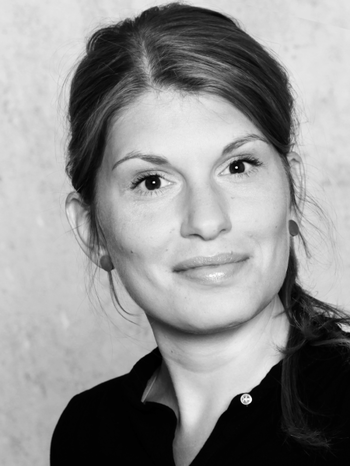Katharina Kuntz M.A.

Ancient Objects and Visual Studies (AOViS)
Ancient Near Eastern Archaeology
Institut für Vorderasiatische Archäologie
Fabeckstraße 23-25
14195 Berlin
Studium
Seit 2016
Berlin Graduate School of Ancient Studies, Programm "Ancient Objects and Visual Studies"
2011 – 2015
Hochschule für Technik und Wirtschaft Berlin, Masterstudiengang Konservierung und Restaurierung, Studienschwerpunkt Archäologisch- Historisches Kulturgut
2007 – 2010
Fachhochschule Erfurt, Bachelorstudiengang Konservierung und Restaurierung, Studienschwerpunkt Archäologisches Kulturgut und Kunsthandwerk
Berufserfahrung
2016
Museum für Kunst und Kulturgeschichte, Dortmund, Volontariat im Bereich Konservierung und Restaurierung
2013
Vorderasiatisches Museum, Staatliche Museen zu Berlin – Preußischer Kulturbesitz, Mitarbeit an der Umlagerung des Mittelmagazins
2012
Hochschule für Technik und Wirtschaft, Berlin, Mitarbeit am Projekt "Katastrophenprävention in kleinen, regionalen Archiven des Landes Brandenburg"
2012
Ludwigs-Maximilians-Universität, München, Mitarbeit am DFG-Projekt "Ein funeraler Kultbau der späten Bronzezeit aus Lăpuș, Nordwestrumänien, und sein kultureller Kontext" in Baia Mare, Rumänien
seit 2011
Deutsches Archäologisches Institut, Berlin, Mitarbeit am DFG-Projekt "Archäologie der Oasenstadt Tayma: Kontinuität und Wandel der Lebensformen im ariden Nordwesten der Arabischen Halbinsel vom Neolithikum bis zur Islamisierung" in Tayma, Saudi-Arabien
Glazed Islamic Pottery from Tacht-e Soleiman – Production and Provenance
The project researches the Islamic pottery found at Tacht-e Soleiman in Iran and aims at understanding production and provenance. The mains focus lies on the archaeometric identification of a local pottery production.
The archaeological site Tacht-e Soleiman is located on a calcareous sinter plateau in the highlands of northwest Iran. Historic texts associate the place with the Sasanian fire sanctuary and royal pilgrimage site Azar Goshnasp as well as with the summer palace of the Mongol ruler Abaqa Khan. Research activities of the German Archaeological Institute show that the plateau was intermittently settled during Achaemenid and from Sasanian to the middle Islamic period. The Museum for Islamic Art in Berlin houses numerous finds from the excavation.
The PhD project focuses on the glazed pottery, nearly complete vessels and mostly diagnostic sherds, from the Islamic period and examines typology, technology, production and provenance. Kiln furniture is also part of the collection and indicates, along with archaeological findings of kilns, a local pottery production at Tacht-e Soleiman. The identification of a geochemical fingerprint is expected to substantiate this hypothesis.
Based on the typology and macroscopic fabric classification the fabrics of representative vessel fragments and the fabrics of the kiln furniture are analyzed with MGR, WD-XRF and microscopic petrography. The combined analytical approach allows the discrimination between various fabric provenances and the determination of a geochemical fingerprint. The compositions of characteristic glazes are analyzed with ED-XRF to further define the regional material culture. Cross-sections are examined to study technical aspects of the production.
The archaeometric identification of a local production at Tacht-e Soleiman combined with the comprehensive data collection allows for supra-regional comparisons and research about trade routes and technology transfer.
Die Dissertation wurde im Rahmen der Forschungsgruppe C-3 Fragments, Ruins and Space des Exzellenzcluster 264 Topoi gefördert.
2014
A. Jeberien/ K. Kuntz, "First Steps – Erfassung und Bewertung von Gefahrenpotentialen in Archiven mittels Risikomatrix", in: Risikomanagement im Kulturgüterschutz (Berliner Beiträge zur Restaurierung und Grabungstechnik IV; München 2014) 70–106.
